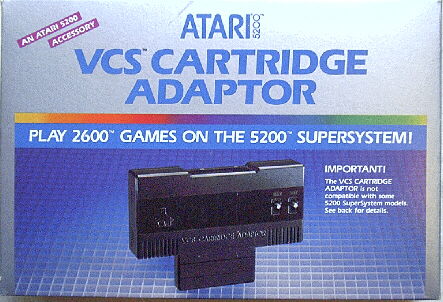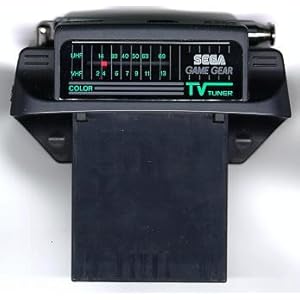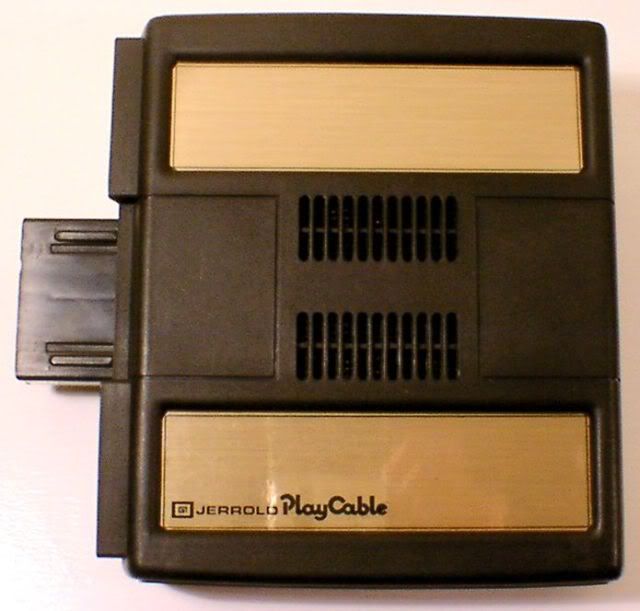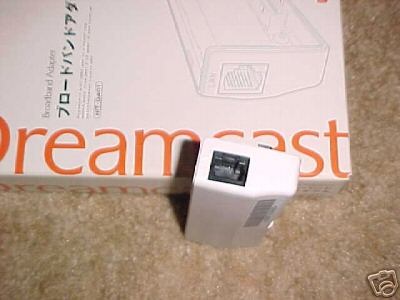-
Xbox
360 HD-DVD drive: As a way to position the Xbox 360 as not just
a game system but a home entertainment system, Microsoft, a backer
of Toshiba's HD-DVD format released an add-on HD-DVD player for the
Xbox 360. At the time it was widely believed that Xbox 360 games
would be released on HD-DVD as a way to overcome the disadvantage of
originally using DVD-ROM as the distribution medium for games on the Xbox 360. When Toshiba pulled the plug on HD-DVD in early 2008
Microsoft discontinued the HD-DVD drive and the last remaining
HD-DVD drives were sold at deep discount prices. By the time the
last of the HD-DVD drives sold through retail by the middle of 2008
as low as $19.95 Microsoft sold 325,000 of the HD-DVD drives for the
Xbox 360. Xbox 360 HD-DVD drives currently sell on eBay between
twenty five and one hundred dollars.
Sega
Channel Adapter: Before there was console video games available
on Playstation Network and Xbox Live there was Sega Channel. A
special adapter that provided by cable operators that was inserted
into the cartridge slot of the Sega Genesis then the cable TV cable
was connected to the Sega Channel adapter. There were about 50
games that were carried at any given time with game titles being
rotated monthly. Games on Sega Channel were limited to games rated
EC (early childhood), E (Everbody but known as Kids to Adults KA at
the time), and T (Teen) By the Entertainment Software Ratings Board.
Some accused Sega Channel of censorship for not carrying game that
carried the M (Mature) rating. Sega Channel adapters are considered
to be extremely rare because the adapters had to be returned to
cable operators when Sega Channel was terminated in 1997.
Atari
5200 VCS Adapter:
Just after introducing the 5200 SuperSystem in
1982 Atari found themselves continuing to lose sales to the
ColecoVision system that had been launched a short time earlier. Buyers
of the ColecoVision system could tap into the large library
of games for Atari's 2600 VCS system by buying an inexpensive
adapter that plugged into the ColecoVision system. As an incentive
to get people to upgrade from the 2600 to the 5200 Atari introduced
their own adapter to play 2600 games on the 5200. With the market
for video games crashing down around them, Atari withdrew the 5200
SuperSystem and the VCS adapter along with it.
-
Atari
Wireless Joysticks:
Wireless controllers come as standard
equipment on all three gaming systems this generation. There have
been wireless controllers for various game systems over the years. Many
from third party manufacturers and some from the console makers
themselves. One of the earliest wireless video game controllers are
the wireless joysticks for the Atari 2600. The bases of the
wireless joysticks were about twice as thick as the bases for the
wired joysticks that were supplied with the 2600. Powered by 9 volt
batteries, the wireless joysticks had antennas that were longer than
the joystick.

Sega
Power Base Adapter: At the dawn of the 16 bit era, Sega to
ensure that their small but devoted base of Master System owners
would upgrade to the Genesis rather than jump ship to another system
offered the Power Base Adapter. Since the Genesis already contained
the Z80 processor used by the Master System, the power base was only
used to adapt Master System cartridges and cards to the slot on the
Genesis. It was Sega's head start in the 16 bit console era that
lead to success, not so much as the backwards compatibility that the
power base offered.
Jaguar
CD:
As Atari's last attempt to stay in the console business the
Jaguar launched in 1993 to poor reviews and poor sales. During the
Jaguar's short life span only 125,000 of the systems actually sold. As
a last ditch attempt to save the system at the time Sony's
original Playstation was about to launch, Atari brought out a add on
for the Jaguar that would play games on CD's. Both Sega and NEC
tried marketing add on CD drives for the Genesis and Turbo Graphix
16 systems. Both of the add on CD drives are considered to be
commercial failures. Production of the Jaguar CD was halted after
the first production run of 20,000 units when it was apparent that
the Jaguar CD wasn't going to save the Jaguar system.

Sega
Game Gear TV Tuner: By 1991 as Sega had taken the lead in the
16 bit home console war, Sega set their sight on Nintendo's dominant
position as the leading handheld video game leader. Sega introduced
the Game Gear to give something to players that they couldn't get
from Nintendo's Game Boy, a colour display. To take advantage of
the colour display and to appeal to more than just video gamers,
Sega introduced a TV tuner that plugged into the cartridge slot of
the game gear. The TV tuner protruded an inch above the top of the
Game Gear which had a radio type indicator to show which channel was
tuned. The Game Gear TV tuner had a built in telescoping antenna
but also had an 1/8th inch jack for plugging in an
external antenna or cable TV. A second 1/8th inch jack
was used for audio and video input. 
Intellivision
PlayCable Adapter: Sega Channel may seen as the pioneer of
downloadable video games on consoles, but even in 1994 the concept
of delivering video games over cable wasn't original. Way back in
1981 Intellivision owners in a few of the major cities in the United
States could get their video games delivered over cable using a
service called PlayCable. Just like Sega Channel, PlayCable used an
adapter module that the cable line hooked up to was plugged into the
cartridge slot of the Intellivision system. PlayCable only lasted a
couple of years, the service was terminated just after the crash of
the video game industry in 1983. Just like the adapters for Sega
Channel, PlayCable adapters were returned to cable operators which
makes any remaining PlayCable adapters extremely rare.
Sega
Dreamcast Broadband Adapter: When Sega released their final
console the Dreamcast in 1999, it was the first system built for
online gaming with a built in 56k dial up modem. Back in 1999 it
was suitable since dial up was the primary Internet access in the
majority of households at the time. During the short life span of
the Dreamcast the shift to broadband in the home was just starting
to get under way. In early 2001 Sega released the broadband
adapter, which was a replacement component, the dial up modem
unclipped from the side of the Dreamcast and broadband adapter went
in the same slot where the dial up modem came out of. By the
broadband adapter was in store shelves the Dreamcast was crushed out
of the market by the Playstation 2.
SegaScope
3D Glasses: As an attempt to more effectively compete against
the Nintendo Entertainment System, Sega tried to position the Master
System as a 3D game system. Sega's 3D didn't use the cheap red-blue
3D glasses that the world knew as 3D at the time. The SegaScope 3D
Glasses used a technology that was new at the time for producing 3D.
A small module inserted into the card slot in the front of the
Master System, a wire connected the glasses to the module. The
first field in a frame of NTSC video was used for the left eye image
and the second field was used for the right eye image. LCD's in the
glasses blocked one eye when the image for the other eye was
displayed. Only eight games were produced for the SegaScope 3D. A
lack of software was just one reason for the failure of SegaScope
3D. The SegaScope 3D only supported one player at time.



